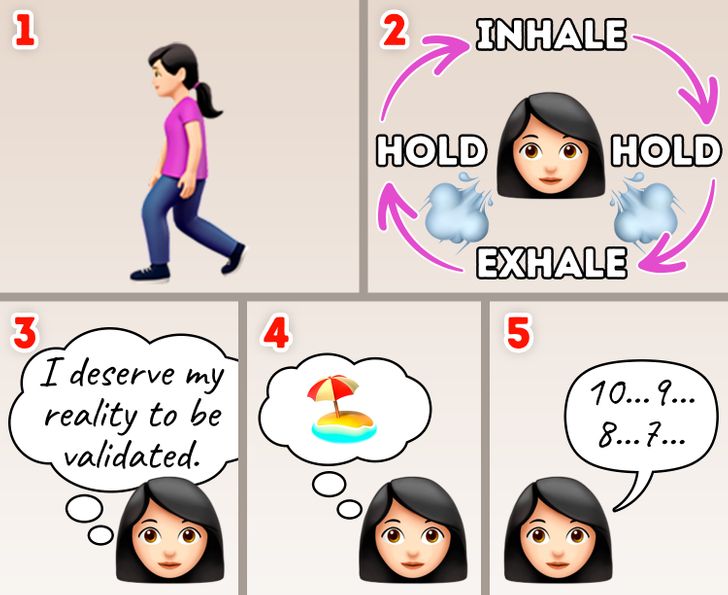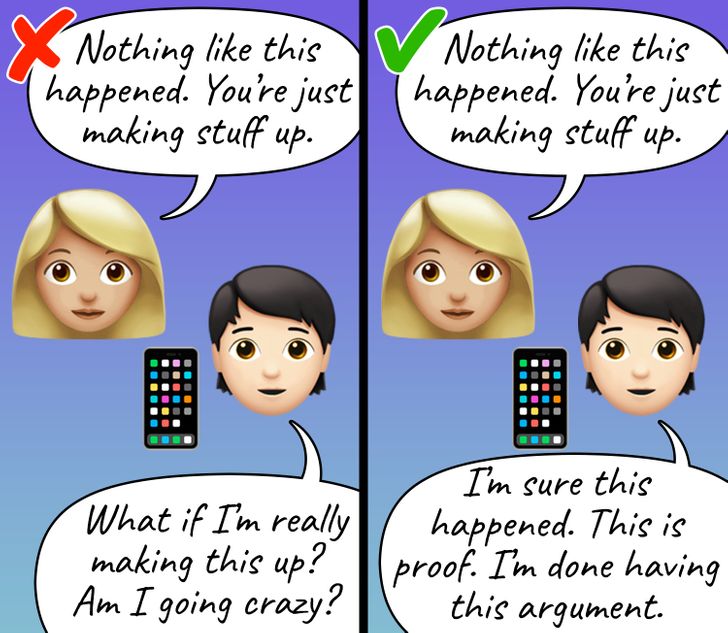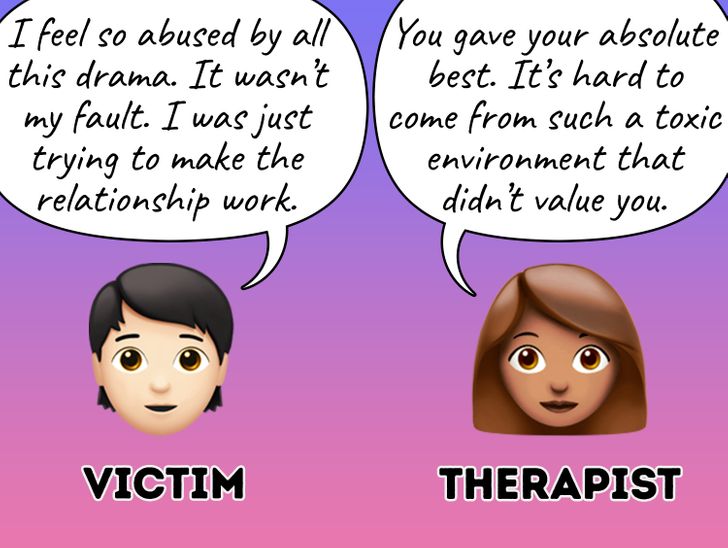What Gaslighting Is, and How to Deal With It
Gaslighting is a form of manipulation where the bully makes you question your own reality. And it makes the victim feel like they’re going crazy. Gaslighting can occur in dating, controlling friendships, and family members as well. If you think that you’ve been affected by it, 5-Minute Crafts will help you lessen the blow with a few tips.
What gaslighting looks like:
1. You’re being lied to.
Gaslighters will ruthlessly lie to your face and never admit their wrongdoings, even when you have evidence to prove them wrong. Eventually, you begin to second-guess your own reality because they’re way too convincing.
2. You’re being discredited.
Gaslighters pretend to worry but spread rumors about you to others, saying that you seem emotionally unstable. In this way, many people favor the abuser without knowing the full story. As mentioned above, gaslighters are liars and may also tell you that others think you’re crazy. Even if these people may never badmouth you, the gaslighter will try their best to convince them.
3. They push the blame away.
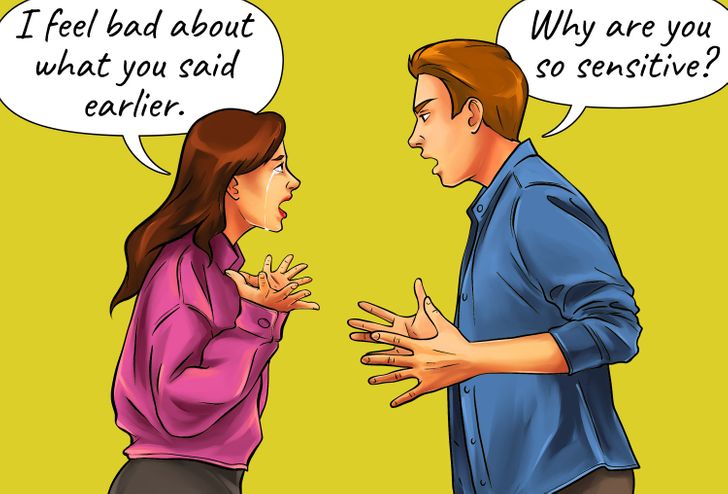
When you call the abuser out for something they said or did, you may often find them changing the subject rather than addressing your concern. They’ll also say things like, “You’re just making everything up. Nothing happened like that.”
They also refuse to take responsibility for their wrongdoings. And since they deny their mistakes, it leaves the gaslit victim confused and frustrated because their pain hasn’t been acknowledged. It then leads to denial and makes it tough for the victim to heal or to move on from the bullying or abusiveness.
Signs you’re being gaslit:
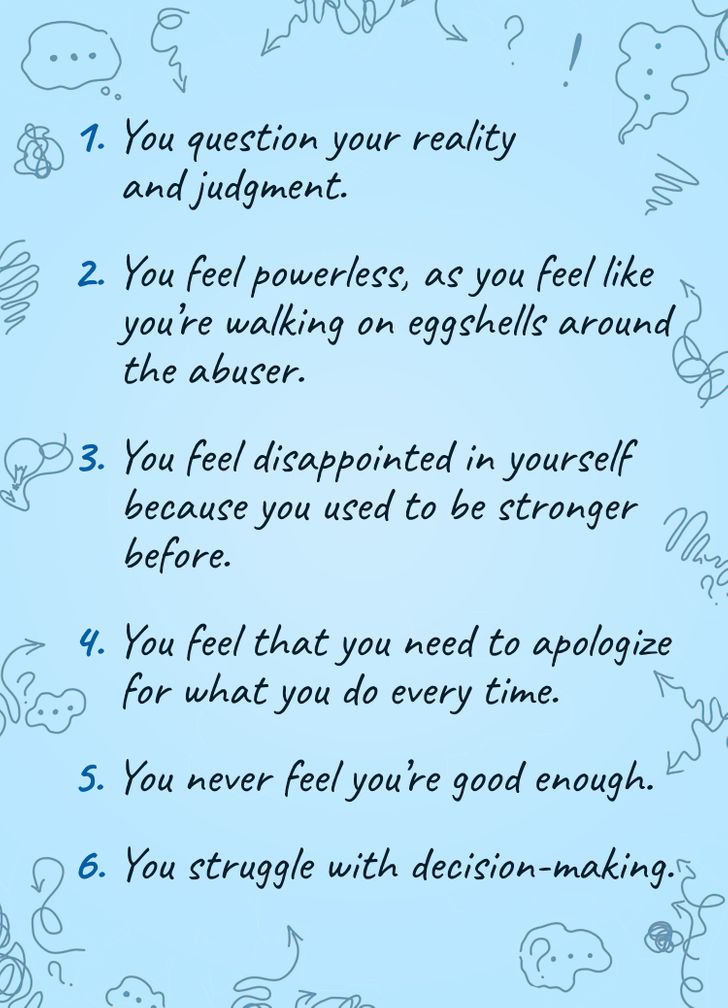
How to deal with it:
1. Take a break from the situation.
The gaslit victim goes through a range of emotions, and these feelings are completely valid. The gist is to not give the abuser your immediate reaction and be calm about the situation. The gaslighters are stubborn and they may not back down. When you get distressed, this gives them more power to manipulate you. When you’re calm, it makes you focus on the truth as well. Here are some things you can try when taking a break:
- Go for a walk to clear your head.
- Try breathing exercises.
- Repeat an affirming mantra.
- Ground yourself with a photo or a visualization exercise.
- Slowly count to 10.
2. Collect as much evidence as you can.
When you collect proof of you being gaslit by someone, you can easily keep track of what is happening to you. When the abuser denies the events, the gathered evidence can help you check the truth for yourself. Here are some ideas you can follow:
- Take screenshots of texts and emails.
- Take pictures of damaged property.
- Note the dates and times of the conversations.
- Try to summarize the conversations with direct quotes.
- Record the conversations on your phone. Some laws can refrain you from doing this, but if you need some legal help, they can assist you with things when you explain the entire situation.
3. Be confident and firm in your version of the events.
The victim and the abuser remember things differently, and you, as a victim, may also wonder, “What if the things did happen the way they said?” If that’s the case, don’t go back to their version because the abuser’s goal is to make you doubt your reality. Your brain is not making the memories up. If you remember something clearly and they deny it, that’s gaslighting.
Try repeating the event calmly with confidence and show them the evidence you collected, but it may have minimal impact on them. Avoid getting into conflicts because any distress will lead you to more manipulation. Refuse to argue by changing the subject, or just leave the room.
4. Reach out to those who will support you.
It may concern you that involving others in your situation may feel like a bunch of drama, but when it comes to gaslighting, having insight from your supporters is important. Including your supporters will help you realize that you’re not crazy or confused. Since your loved ones aren’t directly involved, they’ll give you unbiased opinions and support.
If you work with the gaslighter or are living with one, avoid being alone with them. Try to limit the contact, but if you need to meet them, take someone trustworthy along with you, or just ask them to listen to the conversation. It’s not about taking sides but observing everything about the situation at hand. And for gaslighters, it’s hard for them to manipulate more than one person.
5. Seek out a professional therapist.
Sometimes gaslighting may become abusive. That doesn’t mean you’re wrong, it’s just that no one deserves to be emotionally abused. To begin healing, talking to a therapist is a good idea. If you’re gaslit at work, talk to your HR department. Enlighten yourself about harassment and file a complaint.


